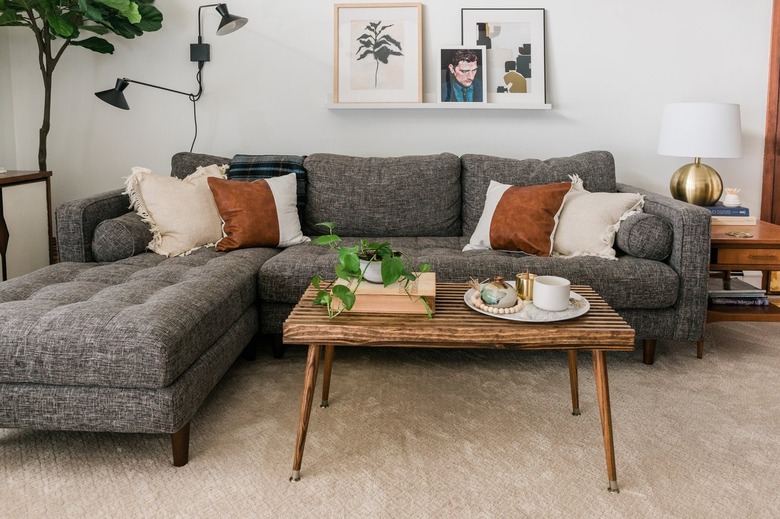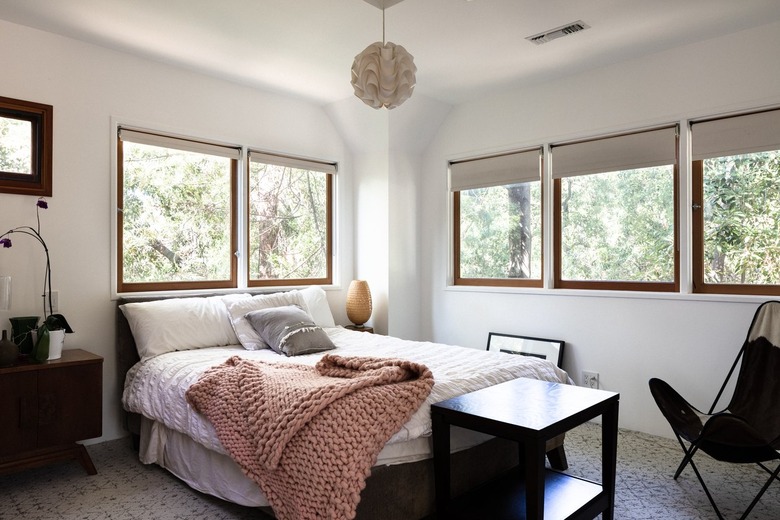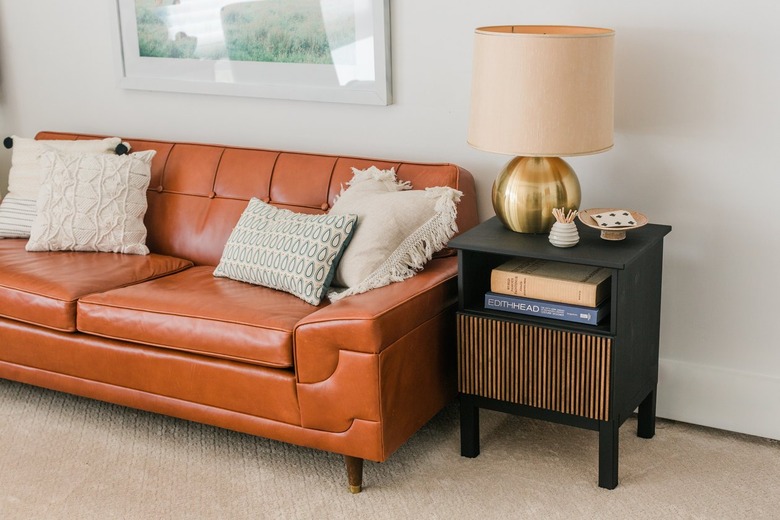How To Hire A Carpet Cleaner (And What It Should Cost)
We may receive a commission on purchases made from links.
The wall-to-wall carpeting in your living room may be the perfect anchor for the color scheme of the entire room, but it can be ruined by a wine, coffee, crayon, or pet stain right in the middle of the floor. Fortunately, carpet cleaners can fix that problem. Professional carpet cleaning companies use high-powered equipment and other techniques to eliminate problem stains, and they revitalize drab carpets and rugs that suffer from the wear and tear of everyday living.
No matter how often you vacuum or the overall cleanliness of your home, sooner or later, all carpets need a deep cleaning that goes beyond normal vacuuming. Carpets should be cleaned by a carpet cleaner as needed or at least once every 24 months.
What a Carpet Cleaner Does
What a Carpet Cleaner Does
A carpet cleaner has the tools and the skill set that is different from the requirements needed to clean other flooring surfaces, such as hardwood, ceramic and porcelain tile, or laminate flooring. The typical visit begins with a walk-through where the carpet cleaner will note stains and particularly dirty areas. Before they get down to the actual cleaning, they will give the carpet a thorough vacuuming. The carpet cleaner may pretreat some stains. They'll then choose the cleaning method:
- Hot water extraction. This is often referred to as steam cleaning, although there is no steam involved. The carpet cleaner injects extremely hot water under high pressure into the carpet and then uses a high-powered vacuum to suck out the water and the dirt. It is the most often used cleaning method.
- Dry cleaning. The carpet cleaner will work a powder detergent into the carpet fibers with special brushes. The powder and the dirt in the carpet is then vacuumed up.
- Carpet shampooing. Just as it sounds, the carpet cleaner uses water and detergent to clean the carpet with the help of special pads on a floor cleaning machine. It is an old-school method that some cleaners still use today. A high-powered vacuum removes the water.
- Encapsulation. This is often called foam cleaning. The process involves the application of a special foam that expands to trap the dirt in the carpet. The material is removed by vacuuming. Not all carpet cleaning companies offer this service.
- Bonnet cleaning. Usually reserved for commercial settings, bonnet cleaning involves applying shampoo and using a carpet cleaning machine with a special pad to remove dirt from the surface of the floor. This method cleans only the top third of the carpet fibers.
Most carpet cleaners will move small pieces of furniture, but many will charge extra for large, heavy pieces. The carpet contractor may recommend keeping large pieces in place and cleaning around them, the reasoning being that if the piece is stationary, the carpet under it does not get dirty. A good carpet cleaning company will place protection under furniture legs to prevent them from touching the damp carpet. Many carpet cleaners also clean upholstery.
Doing Your Homework
Doing Your Homework
Check your manufacturer's warranty concerning carpet care and maintenance. The warranty may specify the frequency and approved methods of the carpet cleaning process. To meet warranty requirements, some manufacturers require the use of equipment and products that are part of the organization's seal of approval program.
The carpet cleaner may be the expert, but they should be aware of any special considerations you may have. For example, only a small amount of biodegradable cleaning solution is used in hot water extraction, so it is a good choice for those who are sensitive to detergents. The method does a good job of killing or removing bacteria, mildew, and other irritants.
The downside is that it leaves the carpet damp and sometimes needs up to 24 hours to dry completely. It is necessary to treat damp carpet with care. Don't put heavy furniture on a damp carpet for a few hours; the carpet cleaner will tell you how long to wait. Don't walk on it any more than is necessary and don't walk on it in bare feet or socks. Only walk on it wearing shoes that are covered with disposable booties.
The dry cleaning method uses chemicals that may affect some people, and ventilation is vital when using this method. The carpet is dry once the process is complete, which is an important consideration if you can't wait for the carpet to dry.
Carpet Cleaner vs. DIY
Carpet Cleaner vs. DIY
Deep cleaning your carpet is a popular DIY project. There are a number of carpet cleaning machines that you can buy or rent, and there are detergents and cleaning solutions to clean carpets and remove specific types of stains and odors. In general, for a really deep cleaning, a professional carpet cleaner will do a better job than a homeowner who devotes an afternoon to the project.
Professional carpet cleaners have better equipment. Many who specialize in hot water extraction use truck-mounted pumps and vacuums for the process. The equipment is more powerful and the water much hotter than what is available to homeowners. The pros also have more experience in treating different types of stains.
However, not every stain or dirty patch of carpet requires the attention of a pro. For spot-cleaning stains or when the carpet just looks a little off, rental carpet cleaners and DIY cleaning solutions are perfectly adequate to bring it back to life. You can keep the carpet looking clean and germ and odor-free without paying for a professional.
You can rent a quality carpet cleaning machine for about $40 to $80 per day. Blowers and air movers to aid in drying the carpet will cost $20 to $30 per day. Cleaning solutions will be extra.
Questions to Ask a Carpet Cleaner Before Hiring
Questions to Ask a Carpet Cleaner Before Hiring
- Are you insured? Carpet cleaners are usually not licensed, but they should still carry the types of insurance other contractors carry, such as liability and workers' compensation.
- How long have you been in business? This will give you an idea of the company's experience and ties to the community.
- Are you certified? The largest certification body is the Institute of Inspection, Cleaning, and Restoration Certification. It offers education programs and carpet cleaning certification.
- What carpet cleaning technique will you use? Why is that the best one for my carpet?
- Are the products and equipment you will be using approved by the Carpet and Rug Institute? This organization has a seal of approval program for carpet cleaning machines and cleaning solutions. Some carpet manufacturers tie their warranty to using CRI-approved products for carpet maintenance.
- How do you charge? Some companies charge by the room, while others charge by the square foot.
- For what do you charge extra? Getting this straight up front can avoid problems later. Some companies will give a flat price per room over the phone, but the amount goes up once they are on-site. Some items that can cost extra include rooms they believe are larger than normal, heavily stained areas, moving furniture, and cleaning stairs.
The Cost of Hiring a Carpet Cleaner
The Cost of Hiring a Carpet Cleaner
A popular marketing strategy used by carpet cleaners is to charge a price per room, usually $50 to $125 per room. However, that cost can escalate once the cleaner is on-site. He may balk at the size of some rooms or say that the carpet is too dirty or stained to support the price that was quoted.
If possible, get an estimate after an on-site inspection. The cleaner may still quote a price per room, or she may charge by the square foot. Expect to pay 20 cents to 40 cents per square foot. The type of carpet can affect the cost. Flat, Berber-style carpets cost the least amount to clean. Carpets with tall fibers can cost 20 to 30 percent more to clean than a Berber.
An on-site inspection allows the contractor to take exact measurements and call out the things that will add to the cost. Some items that will increase the estimate include stairs, which cost about $2 to $3 per step; pet stains that have penetrated the carpet, which can cost $40 to $300; and moving furniture, which can add $200 per room to the bill.


